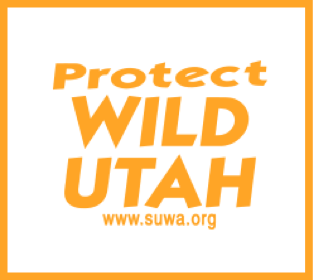|
For immediate release: March 14, 2007 Contacts: BLM May Allow Disastrous “Tar Sands” Development on Expired SALT LAKE CITY (March 14, 2007) Under direction from the U.S. Interior Department, the Utah Bureau of Land Management (BLM) plans to reinstate expired oil and gas leases within the Grand Staircase-Escalante National Monument, Glen Canyon National Recreation Area, and two Wilderness Study Areas for the purpose of allowing environmentally disastrous “tar sands” exploration and development. In a lawsuit filed today, the Southern Utah Wilderness Alliance, Natural Resources Defense Council, National Parks Conservation Association, and The Wilderness Society claim that BLM’s maneuver is illegal because the requests to reinstate the leases were not made before the leases expired more than a decade ago. “BLM’s decision to try and breathe new life into these leases is illegal and directly contradicts the agency’s normal procedures,” said Stephen Bloch of the Southern Utah Wilderness Alliance. “This outrageous decision unnecessarily exposes tens of thousands of acres of Utah’s most sensitive lands to one of the world’s most destructive mining technologies.” The history of the Utah leases in question is confusing and points to decades of sloppy management decisions by BLM. One certainty is that the majority of the leases expired shortly after the applications were filed in 1982-83, and all expired by 1992. In the early 1980s, BLM received applications to convert conventional oil and gas leases to permit tar sands development and, in the mid-1980s, the agency prepared draft environmental impact statements to look at potential tar sands development in areas that today include much of Grand Staircase-Escalante National Monument, the Glen Canyon National Recreation Area, and the Fiddler Butte and French Spring-Happy Canyon wilderness study areas. BLM never completed these analyses and never issued records of decision approving (or denying) these activities. According to Bloch, the BLM never suspended although it was required to do so the leases underlying the tar sands applications. The lessees either never noticed this omission or simply failed to do anything about it (i.e., there is no record of any of the lessees applying for a lease suspension). As oil prices fell in the mid-1980s, the interest level of the lessees/applicants dropped off (as did BLM’s) and BLM put these projects on the shelf for more than 20 years without finally adjudicating the underlying leases. In the interim, the national significance of these lands was recognized and they were formally protected from future development. Even though BLM recently determined that many leases had in fact expired, the agency is now threatening to reinstate the leases at issue here in the Grand Staircase-Escalante National Monument, Glen Canyon NRA, and other sensitive Utah wildlands. “Because of its industry-friendly history, it is not surprising that BLM has decided to give the benefit of the doubt to oil and gas development rather than to environmental protection,” said The Wilderness Society’s Suzanne Jones. “But when there is already a huge surplus of oil and gas permits that have yet to be developed in the state, do Utahns really want to open the Grand Staircase and other special lands to the same environmental disaster that is creating global environmental concern in Alberta?”
|
|
|
|

 Southern Utah Wilderness Alliance
Southern Utah Wilderness Alliance
Protecting Utah's Redrock Country
